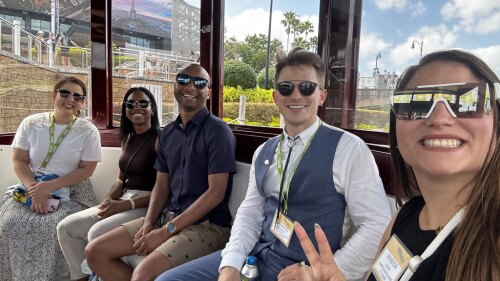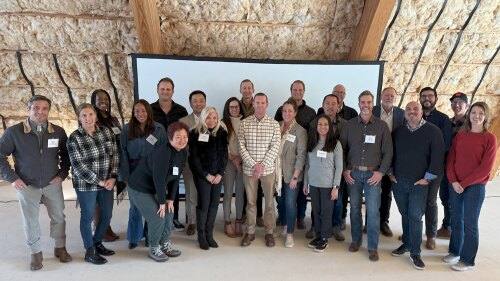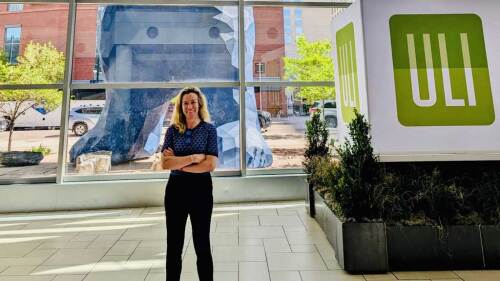A day after Hurricane Harvey left Houston submerged in five feet (1.5 m) of water, the Washington Postpublished a piece examining the vulnerability of other low-lying cities—New Orleans, Tampa, New York, and Miami—to 100- and 500-year floods, which are events that have a one-in-100 chance or one-in-500 chance, respectively, of occurring in any given year in that location. Although the piece was specific to flood risk, the main takeaway—more people, more development, more vulnerability—is a certainty that could be applied to any city at risk for any natural disaster.
While Harvey was a historic storm, it was but one of several severe weather events affecting urban areas with increasing frequency around the world. (At the same time Houston was flooding, so was Mumbai. And, even as Houston begins its recovery, the powerful Hurricane Irma threatens the U.S. mainland and the Caribbean.) Although each event exposes vulnerabilities resulting from how we’ve built in the past, each event also yields lessons about how to build for the future, to make our cities more resilient and ultimately more competitive. These are lessons that, if learned, can help transform the long rebuilding process from one focused not just on building back, but also on moving forward:
- There are no more “storms of the century.” Harvey produced unprecedented amounts of rainfall that would have inundated any city, no matter how well prepared. It was designated as a once-in-several-centuries event. But while chances of another storm on the scale of Harvey are remote, frequent crippling storms are not. What used to be considered a storm of the century can be expected to occur somewhere around the globe at least every few years—that is the reality of climate change.
- Planning for resilience makes good business sense. Urban planning, design, and development must take into account that a severe weather event will occur sooner rather than later. However, resilience is not just about preparedness for major events. Resilient investments in infrastructure and resilient approaches to land use can 1) help cities protect residents more efficiently and cost effectively, and 2) foster business continuity and long-term investment and economic development opportunities. Planning for resilience makes investments in people, assets, and the value created in cities more secure.
- The least vulnerable places should be positioned as the most attractive for development and investment. More and more cities are focusing on guiding investment and development to locations that are by nature and circumstance less vulnerable. They are accomplishing this with carrots such as supportive zoning policies or financial incentives, or through strategic deployment of city facilities. The point is to encourage a higher density of people, activities, and businesses in areas that have the infrastructure to thrive in changing conditions. ULI is helping move the needle in this regard: our resilience-focused Advisory Services work, including panels in Norfolk, Virginia; Lafayette, Louisiana; and Miami, aims to help cities identify and leverage their land use–related assets and move toward more resilient urban growth patterns over the long term.
- Private sector input is vital as cities plan for resilience. To achieve on-the-ground results and a long-term transformation of the built environment, the private sector needs to be involved in land use decision-making to ensure that local policies are effective and benefit the entire community. Much of ULI’s work, particularly through our district council and national council networks, has sought to incorporate the private sector perspective in planning and building for resilience. And, through our new partnership with the Rockefeller Foundation’s 100 Resilient Cities program, more members will be assisting cities in becoming more resilient.
In September, attendees at ULI’s Housing Opportunity conference in New Orleans will be touring several mixed-income, mixed-use developments in Tremé, Gentilly, and mid-city neighborhoods that have been built in the post-Katrina years. What they will see are examples of building for resilience not just from an environmental standpoint, but in terms of improved livability, social equity, and economic vitality. Few could have envisioned these vibrant places in August 2005, when much of New Orleans looked like Houston in August 2017. Yet, they are built and they are thriving—places that demonstrate the value of reimagining and building for the future, rather than simply re-creating the past. This type of future-focused development is a trend that will make cities stronger and better able to withstand not just natural disasters, but other types of disruptors, too.
ULI has long promoted development practices that save energy, land, and other natural resources—practices that promote resilient communities. Our work in this area is supported by our Center for Sustainability and Economic Performance, with programs focused on improving building performance, energy conservation, urban resilience, and healthy communities. Each of these programs is helping ULI members lead the future of resilient development—and resilient development is the future of urban development. Cities as different from each other as Duluth, Minnesota, and Manila, Philippines, are moving ahead in this regard, as are the 40,000-plus ULI members who are leading by example with development that serves as a solution, rather than an obstacle, to improving urban resilience.
The reality of climate change and its impacts are forces that will—sooner rather than later—result in the institutionalization of resilience as a 21st-century development practice. This could be considered as the one silver lining to Harvey as well as future crises. We live in an urbanized world. Development is inevitable, but bad development is not. We are strengthening our communities through what we build, how we build, and where we build.





